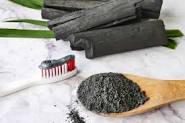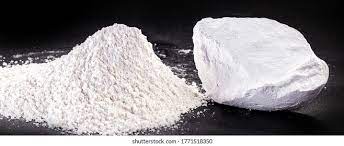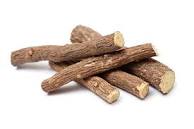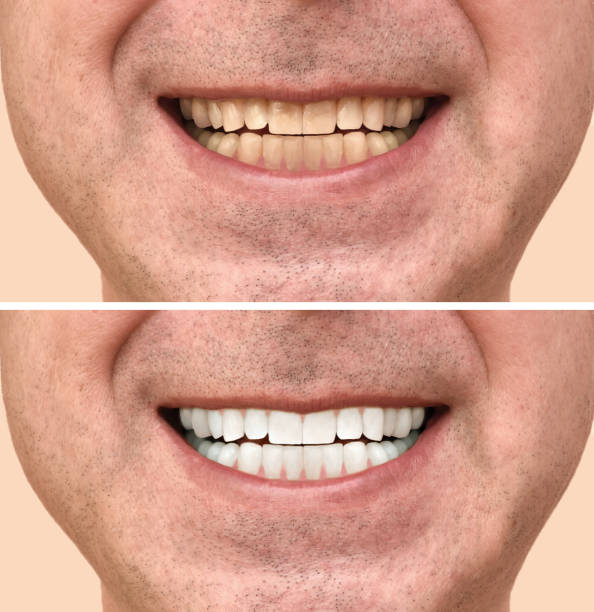The stare of your teeth dictates your smile, right? It’s unfortunate if you don’t have white teeth. Nevertheless, your condition is reversible. Here are ways how to whiten yellow teeth naturally.
A 2011 study found that everyone is obsessed to some degree with how to get their teeth pearly white. Significant percentages are even willing to go the extra mile to get dental implants.
Because of the overwhelming need, thousands of teeth-whitening products have been manufactured, with numerous side effects. (1,2,3)
A 2006 study also links teeth whitening products to oral cancer, toothaches, and dental issues. However, safe lifestyle practices may make your teeth white again. Several tooth whitening methods have severe results.
This post saves you from this problem. Here are 13 ways on how whiten yellow teeth naturally and get back your bright white smile.
How can I get rid of yellow teeth?
Often teeth whitening treatments require a lot of sacrifices and caretaking, but with home remedies, you are safe from adverse side effects. Moreover, these remedies will also kill bacteria that may otherwise cause you dental problems.
1. Oil pulling
Oil pulling is a well-known Indian remedy for oral hygiene. It also helps clean off toxins from the body besides teeth whitening. When you do oil pulling with coconut oil, it helps reduce plaque formation and incidences of gum disease. (4)
Oil pulling simply involves swishing oil in the mouth to remove bacteria. If left, these bacteria often turn into plaques making the teeth yellow. You may use coconut, sunflower, or sesame oil in this practice.
Initially, Indians used sunflower oil and Sesame oil. With time as people experimented with other oils, they discovered that most oils could also work, including coconut oil. (5)
However, coconut oil pulling is still outstanding in this treatment, for it is well known for its multiple other health benefits. Its auric acid also kills bacteria and reduces inflammation. Furthermore, it has the most pleasant taste and smells among the other oils.
A study by Wheater and Friedl (2016) confirmed that daily oil pulling helps eliminate bacteria and plaques. This routine removes the yellow stain on the teeth, leaving them dazzling white.
Although there is no scientific proof of how oil pulling can whiten teeth, most Indians can confirm that regular use of this remedy can help make your teeth dazzling white. Furthermore, it has no adverse side effects, so giving it a try can’t be a bad idea.
Melt a tablespoon of coconut oil into your mouth—swish for ten to fifteen minutes, pushing it between your teeth. Then spit. Oil pulling doesn’t expose the teeth to any acid, which may erode the enamel. It is therefore very safe to use. (6)
You may also use a toothpaste containing coconut oil. It has several proofs of adequate ability for teeth whitening.
2 Eat fruits and vegetables.
According to the American dental association, fruits and vegetables create more saliva in the mouth, which can help clear debris from the teeth. Moreover, they are ideal for your overall health.
A diet rich in fruits and vegetables is good for naturally whitening teeth. Raw, crunchy fruits can help rub away even the most difficult of plaques; hence may help whiten teeth. Strawberries and pineapple are the top fruits for teeth whitening.
Strawberries
Many celebrities have confirmed that strawberries can effectively whiten teeth naturally at home. A combination of strawberries and baking soda mixture yields better results.
Strawberry contains malic acid that can effectively remove discoloration. However, the malic acid in strawberries doesn’t erode the tooth enamel.
Strawberry, however, may not penetrate the stains on the teeth, especially stains hidden between closely packed teeth. One should only use this remedy a few times each week. Excessive strawberries may be harmful to the teeth.
To use, pound some strawberries into a paste and add a very little baking soda. Use this paste to brush your teeth.
Pineapple
Initially, it was an anecdotal part of whitening treatments, but a good percentage found it compelling as people tried. You can use pineapple to whiten teeth naturally at home.
A study by Rajab, Al-Hindi, and Elmarsafy (2021) found that most manufactured teeth whiteners containing bromelain were nearly twice as effective as the others without it.
Pineapple contains a good quantity of bromelain enzymes. Bromelain is very effective in removing stains on the teeth.
Regularly eating pineapple or making a paste and using it to brush your teeth can be an effective way to make your teeth white.
3. Prevent tooth staining
Limit consumption of staining foods
Yellow or discolored teeth don’t happen overnight; it involves piling up certain substances on the teeth until they cause discoloration. So the best thing to do could be to prevent it from happening altogether.
Thus, limiting straining is the best remedy for teeth that are beginning to get discolored. It is also recommended for use by those wanting to maintain their white teeth.
Some foods and beverages that may cause teeth staining include red wine, coffee, soda, and dark berries. You may not avoid them altogether; however, limiting the quantities you take at a time is essential.
Drinking these beverages using a straw to help reduce their contact with your teeth is advisable. Brushing your teeth thoroughly about thirty minutes after taking the beverages is also good.
Other habits that may discolor your teeth include smoking and chewing tobacco. It is advisable to avoid them as much as you possibly can.
Limit your sugar intake
To naturally whiten teeth, you need to check on the level of sugar you take. Sugar encourages the growth of Streptococcus mutans, the bacteria-causing plaque, and gingivitis species.
When you take sugar, these bacteria get the necessary food to grow and thrive. So if you leave the sugar without brushing, this bacteria may easily result in plaque hence discoloring the teeth.
It is advisable to brush your teeth soon after consuming sugary foods. Regular brushing after meals helps trim the growth of bacteria, preventing your teeth from discoloring.
Increase calcium in your diet
Some discoloration is caused as a result of corrosion of the enamel. Enamel erosion exposes the dentin from the inner tooth (dentin is yellow).
Therefore, strengthening the teeth could help protect the enamel, maintaining your teeth white. One primary protector of the enamel is calcium.
To whiten teeth naturally at home, consider taking calcium-rich foods like milk and broccoli.
4. Regularly brush and floss
Regularity in brushing and flossing is a natural teeth whitening method that comes second to none.
Although teeth coloration in some cases comes from age, most result from plaque buildup.
Regular brushing and flossing of the teeth ensure the removal of most bacteria and stains. Furthermore, it prevents the formation of plaques in the mouth, keeping the teeth white.
Moreover, regular brushing can help make discolored teeth white again.
Moreover, flossing helps remove substances stuck between the teeth. If left, these substances may cause teeth discoloration.
5. Apple cider vinegar
When used in minimal amounts, apple cider vinegar can effectively whiten teeth. It’s a scientifically proven way to naturally whiten teeth.
Bifulco et al. (2016) research confirms that apple cider vinegar is a good bleaching agent. The study involved cow teeth, and apple cider vinegar proved effective in teeth whitening.
It would be best to remember that an excessive quantity of apple cider may not be suitable for the teeth. Using a lot of apple cider vinegar to whiten teeth at home may cause tooth enamel decay.
It is therefore only advisable to use a little quantity between reasonable time gaps. More studies are also encouraged to ascertain the effectiveness of this home remedy.
6. Fruit peels
Using banana or orange peels can naturally whiten teeth. There are scientific pieces of evidence that these peels can help whiten teeth.
Lemon peels
Lemon juice contains d-limonene compound and citric acid that helps remove stains on the teeth, making them whiter.
Rub the peels on your teeth for about two minutes. Swish water in your mouth and spit, then brush your teeth afterward. This home remedy is mostly trusted based on anecdotal confessions by past users.
However, Mahmoud et al. (2021) researched the effectiveness of toothpaste containing ten percent d-limonene in removing tooth stains caused by smoking and tea.
He found that this remedy can eliminate stains. However, the remedy had little effect on tobacco stains that had lasted for long.
He concluded, therefore, that if you have teeth stains or yellow teeth that have not lasted for long, lemon peels can be an effective remedy.
Orange peels
Just like in lemon, orange peels also contain d-limonene, which helps whiten the teeth. The only difference is the quantities of this substance in lemon and orange.
Orange contains lesser quantities of d-limonene. It’s ideal for people with sensitive teeth. For its smaller d-limonene amounts, its effects are less likely to be severe.
The process is the same. Take an orange peel and gently rub it on your teeth, then clean.
In a different study by El Bishbishy et al. (2021), they tested the ability of citric acids in teeth whitening. Of all samples collected, tangerine scored the highest, followed by orange and lemon.
One should, however, be very careful while using tangerine, lemon, and orange peels. The peels are acidic and can erode the enamel, which may worsen the condition.
Stop using them immediately if you notice your teeth becoming more sensitive.
Banana peel
Banana peels work similarly to orange and lemon peels. It helps remove stains from the teeth, leaving them whiter.
Banana peel has a sticky substance that holds stains and helps pull them off. In this way, they help clean the teeth, leaving you with a while and attractive enamel.
However, banana peel whitening effects are not scientifically proven. Users should stick to as minor quantities as possible. If you have discolored teeth, banana, orange, and lemon peels are worth a try.
When you notice your teeth becoming more sensitive, you should stop using them and try an alternative home remedy for whitening teeth.
7. Activated Charcoal

You must have heard of this remedy for teeth whitening. It works so effectively in making the teeth whiter.
Charcoal is highly absorbent. Activated charcoal has improved porous qualities. For this reason, it can naturally whiten teeth, leaving them dazzling white. It also assists in eliminating excess bacteria and toxins from the mouth.
Users of toothpaste containing activated charcoal have also claimed it is an effective teeth whitener. Research by Ann (2011) suggests that using activated charcoal directly yields much better results.
To make it home, grind a piece of charcoal into powder. Put in a steel container and gently heat. Allow cooling.
You can add a little to your paste and use it to brush. Do not brush your teeth vigorously, as it may tear your gums. Brush gently but firmly in circles for about two minutes and wash your mouth.
Alternatively, mix a teaspoon of the activated charcoal and swish it in your mouth. You may also do this after brushing for better results. Make sure to rinse your mouth clean after brushing with activated charcoal.
You must be keen while using this remedy not to wear out too much enamel. Wearing the enamel may expose your dentin, making your teeth more sensitive.
8. Papaya fruit
Papaya contains enzymes that help in teeth whitening. It has enormous amounts of papain, an enzyme that effectively removes stains from the teeth.
A study by Mungara (2016) confirmed that papaya is effective for teeth whitening. He, however, noted that he did not determine the side effects of using this remedy. Therefore he advised users to be cautious and that more research needed to probe the issue.
To use papaya, you should crush the fruit into a paste and use it to brush. Use this only a few times each week.
9. Maintain excellent oral hygiene
Most coloration incidences are due to neglecting overall oral health. In most cases, the yellow stain and colored teeth disappear as people improve their dental and oral hygiene.
If your stains and yellow teeth are due to skipping brushing and light cleaning of the teeth, you can quickly correct it by brushing regularly.
The teeth may turn yellow because of enamel thinning, stains, or plaque. Both can be corrected by improving dental hygiene and brushing with your regular toothpaste.
For enamel thinning, one must avoid eating acidic foods which erode the enamel. For plaques and stains, regular brushing is an effective solution.
Ensure flossing to remove food particles that often remain between your teeth. These food particles may be one of the reasons your teeth become yellow.
10. Kaolin Clay

The soil on your teeth? Well, that’s good news if you want whiter teeth.
A 2016 study confirmed that kaolin clay could help whiten teeth naturally. It removes plaque and surface stains, making the teeth look whiter and more glowing.
Kaolin clay is rich in minerals and natural bleaching agents. These properties are effective in stain removal and teeth whitening.
Kaolin clay also eliminates bad breath, prevents cavities, and strengthens the enamel.
If you can get some kaolin clay, add it to your toothpaste and brush. If you can’t get kaolin clay, any other clay soil is also effective but may need you to use it for longer.
Mix a little clay with water. To improve the scent, add a little clove or coconut oil. Use this solution to brush your teeth.
After a few minutes, you may use your regular toothpaste to clear all the remaining clay particles between the teeth.
11. Turmeric
Powdered turmeric is an effective home remedy to make your teeth pearly white. It also has antimicrobial and anti-inflammatory properties for healthy gums.
These properties are the reason it is an excellent preference in dental care. Moreover, curcumin in turmeric helps prevent gum disease and gingivitis.
This home remedy, however, takes a little longer to manifest. But the results are long-lasting and worth it.
To use, add a bit of powdered turmeric to a little water to form a paste and use it to brush. Make sure to clean your mouth well after. You should not use this remedy more than once daily; excessive use may erode the enamel.
12. Licorice root

Licorice root contains glycyrrhizin, a compound helpful in cleaning the teeth and fighting tooth decay. It is a well-known herb in China for teeth whitening.
Much anecdotal evidence confirms the effectiveness of Licorice as a natural teeth whitening method. You may consider using Licorice as a toothbrush. The chewing also in itself may help clean the teeth.
This advantage is that you can use it as often as you wish.
For discolored teeth and plaques, there are a variety of solutions. The remedies may either be natural or artificial.
Artificial prescriptions have chemicals that often yield numerous side effects. On the other hand, natural remedies have negligible to no side effects. Moreover, most of them are cheap and readily available substances.
Even though scientific research on most of them is limited, anecdotal evidence proves their effectiveness even for healthy gums.
13. Hydrogen peroxide
Hydrogen peroxide is a natural bleaching agent and may effectively help whiten your teeth. It has teeth whitening properties that science approves.
A 2019 clinical trial found that bleaching the teeth by using hydrogen peroxide is effective for teeth whitening.
Clinical trials in 2015 affirm the affectivity of 6% hydrogen peroxide in teeth bleaching. Within one month of the treatment, there were remarkable changes in the color of participants’ teeth.
Another 2013 study suggests that hydrogen peroxide is safe and effective for whitening teeth. You may consider using this remedy at home for pearly white teeth.
Furthermore, hydrogen peroxide will help kill bacteria that may cause dental issues besides teeth whitening. However, like apple cider vinegar, it may cause tooth enamel decay, so ensure you use these remedies in small quantities.
You can also mix hydrogen peroxide with baking soda to make a paste and use it for brushing to whiten teeth. Do not overuse hydrogen peroxide to reduce the incidence of gum irritation.
Does baking soda get rid of yellow teeth?
Baking soda is among the simple techniques on how to whiten yellow teeth at home.
A 2017 study suggests that baking soda can help whiten teeth at home and may help you get whiter teeth. Therefore, you may brush with baking soda for better results.
Another study supports the use of baking soda to whiten teeth naturally because of its antibacterial effects on dental issues.
Baking soda has natural teeth whitening properties and may help with better results in your quest to whiten your teeth. Brush with baking soda paste to remove discoloration.
How long does it take for baking soda to whiten teeth naturally?
When using baking soda to whiten your teeth, there is no specific period, but it takes a few weeks. There are other factors that you must consider to achieve better results.
Moreover, sodium bicarbonate may help control dental bacterial growth by creating an alkaline environment in the mouth.
Teeth whitening kits
Other ways of teeth whitening at home involve suitable teeth whitening kits. Several kits may help you whiten your teeth at home. Check your nearest dental hygiene store and pick an appropriate teeth whitening kit and follow the instructions carefully to whiten your teeth.
Do teeth whitening kits hurt?
It’s rare, but some individuals with teeth sensitivity often report pain and discomfort when they use teeth whitening kits. Therefore, consider consulting your dentist when choosing the correct teeth whitening kit.
Several whitening products and kits don’t severely affect your dental health if you use them correctly. If you have any issue with many commercial whitening products, you may switch to natural whitening techniques.
What is the main cause of yellow teeth?
A 2019 clinical study found that dental hygiene is the primary cause of teeth discoloration. Therefore, you should monitor certain foods that you take. Sugary and acidic foods are prone to cause yellow teeth.
Other studies show that dental carry and periodontal disease may also cause discoloration of teeth.(7)
Other causes of teeth discoloration include:
Environmental chemicals
A 2007 study in Zambia showed that endemic environmental chemicals in water cause teeth discoloration. The research found the compound endemic to Zambia dental fluorosis, which was responsible for teeth discoloration. (8)
Mouth rinses
A 2015 medically reviewed study found that several types of mouthwash have nanoparticles that may discolor your teeth. These chemicals may be suitable for removing surface stains from the teeth, but they can discolor your teeth at the same time.
Another 2005 peer-reviewed study affirms that chlorhexidine mouth rinses cause teeth discoloration.
Certain dental procedures
A 2020 study proved that dental procedures like endodontic material have the challenge of causing teeth discoloration.
Use of tea and coffee
An in vitro study found that tea and coffee are responsible for teeth discoloration. Another 2022 study affirms that black tea and red wine are primary beverages that cause teeth staining.
Smoking and chewing tobacco
Clinical trains show that 28% of tobacco smokers suffer from mild to severe tooth discoloration.(9)
Another 2000 study lists teeth staining a month as the side effect of tobacco smoking. To effectively whiten your teeth, you must quit smoking.
Chewing of betel morsel
A 2002 study among the Asian population showed that chewing betel could cause reddish discoloration of the teeth. Betel may add surface stains that cause teeth discoloration. You may floss after chewing betel to maintain a brighter smile.
Certain Medications
A 2021 study suggests tetracycline medicine may also cause yellow teeth and enamel dysplasia in kids. They cause surface stain buildup on the teeth and change the color.
Another study also suggests that minocycline is another drug that may cause teeth discoloration.
Dietary habits
Excessive consumption of sugary foods may cause teeth discoloration. Dietary habits of acidic food and drink consumption are the leading cause of yellow teeth in kids.
Ensure a flossing routine after every sugary food intake to prevent food particles from remaining between the teeth. Use commercial toothpastes and a brush with soft bristles to avoid dental injuries.
What deficiency causes yellow teeth?
According to Turfs now, calcium deficiency can cause teeth discoloration. Another 2013 study proves that lacking vitamin D, E, and A may cause teeth discoloration. You need to check on your dietary habits to improve on how to whiten yellow teeth at home.
For other tooth whitening techniques to work effectively, ensure there are no deficiencies in your diet.
Summary on how to whiten yellow teeth
One disclaimer you should know is that all the natural teeth whitening methods cannot yield better results without regular brushing and proper dental hygiene.
The above information contains vital techniques to whiten teeth naturally at home. Kindly try them along with other teeth whitening methods for a brighter smile.
Be careful about the possible effects of some of these remedies on tooth enamel. Hydrogen peroxide and apple cider vinegar have track records of impact on tooth enamel.
Always use everything in moderation as you endeavor to whiten your teeth. Ensure regular brushing and flossing.

